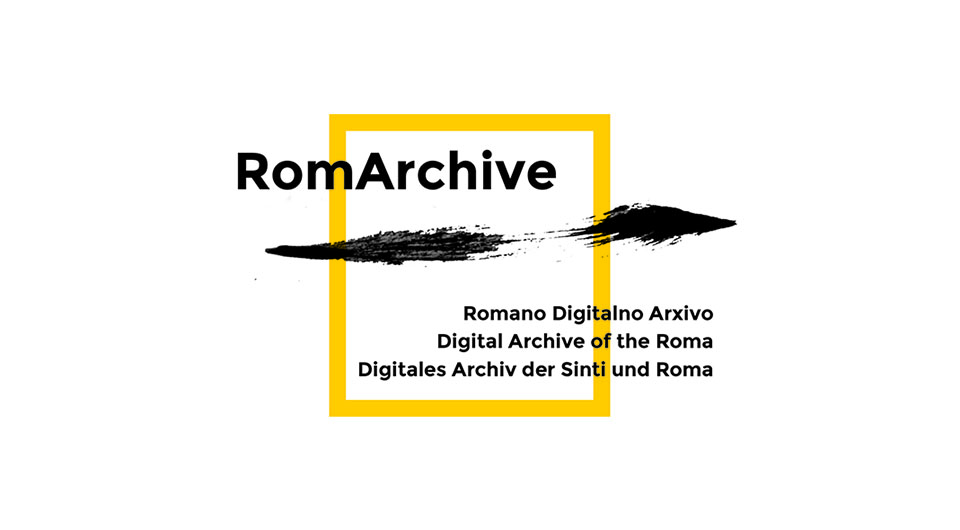DEUTSCH | ROMANES
Ethical Guidelines [1]
The aim of RomArchive is to foster the process of deconstruction and reconstruction of Romani history, arts, and cultures. New narratives of both the past and present need to be created and preserved for future generations.
RomArchive intends to counter and subvert not only the structural, secular racism that led to antigypsy representations of Romani identities, arts, and cultures, but also the hierarchy of non-Romani perspectives over Romani perspectives in the field of culture.
The material will be compiled and presented to proffer the entire scope of portrayals of Roma[2] as protagonists, agents of change, survivors, and contributors to mainstream cultures and societies. This will also ensure that Roma are not portrayed solely as victims.
RomArchive is a cultural project, yet it reflects, and is framed by, its political context.
The work of the individual archival sectors is not intended to be an exhaustive and representative research project, but rather a curated collection that respects the following principles and guidelines:
- RomArchive contributes to the cultural and intellectual diversity of Europe.
- RomArchive increases the visibility of Romani cultures, in particular their self-representation, and actively seeks to enhance the profile, impact, and standing of these cultures. The archive approaches the history, language, and cultures of Roma as historical assets to be preserved, disseminated, and handed down to future generations.
- RomArchive guarantees equal rights and equal treatment of all persons, regardless of gender, ancestry, religion, sexual orientation, or disability. Only an atmosphere of mutual respect can ensure creative and productive work.
- RomArchive guarantees freedom of opinion, freedom of artistic expression, and research and curatorial autonomy.
- RomArchive rejects all racism and sexism.
- The curators pledge to ensure that their work meets the highest standards of quality, and that their interaction with contributors is honest and accurate. No artist is to be included in the Archive against their expressed will. When it comes to the online-publication, personal and authorship rights (so far as known) as well as licensing rights and copyrights are to be strictly observed.
- The curators also pledge not to use, or allow to be used, their skills or expertise for purposes that go against the goals of the archive, or for personal advantage or gain.
- RomArchive is committed to Romani ownership as well as to the full participation of Roma.
- The selection criterion for inclusion in the archive is the artistic quality of an artifact or its significance to cultural history.
- Stereotypical or otherwise offensive representations[3] of Roma may only be presented in the archive with contextualization or deconstruction of the content, in order to avoid additional harm or violation. This applies equally to art produced by Roma themselves.
- RomArchive is fundamentally aimed at a wide audience, with broad access. Access for users will be free of charge.
- RomArchive is not associated with any political party or association, and will respect the principles of transparency in all its activities.
- RomArchive collects and presents artefacts and narratives in the original different dialects of the Romani language. When translating into the Romani language, an international academic Romanes will be used.
Footnotes
1. These ethical guidelines represent the framework and principles for the entire project, governing its three main spheres – collection policy, access policy, and presentation policy. Some of these ethical guidelines are further detailed in the document “collection policy.” Issues of communication, property rights, and outside fundraising are regulated in contracts with the individual curators.↩
2. The term “Roma” is used to encompass the wide diversity of the groups covered by RomArchive: on the one hand a) Roma, Sinti/Manush, Calé, Kaale, Romanichals, Boyash/Rudari; b) Balkans: Egyptians and Ashkali; c) Eastern groups: Dom, Lom and Abdal; and, on the other hand, groups such as Travellers, Yenish, and the populations designated under the administrative term “Gens du voyage”, as well as persons who identify themselves as Gypsies.↩
3. Racist or stereotypical representations can be divided into three distinct forms: racism that is obvious and personal; careless, unconscious or conscious use of stereotypes; and a deliberate (risky, provocative) artistic strategy for dealing with racism and stereotypes.↩
WHAT WOULD YOU LIKE TO READ NEXT?
Back to the BLOG
FURTHER INFORMATION ON THE PROJECT
About RomArchive
FAQ (Frequently Asked Questions)
Press Area
Project Participants & Archive Sections
Ethical Guidelines
Collection Policy
Sponsors | Partners
Privacy Statement
Imprint | Disclaimer
